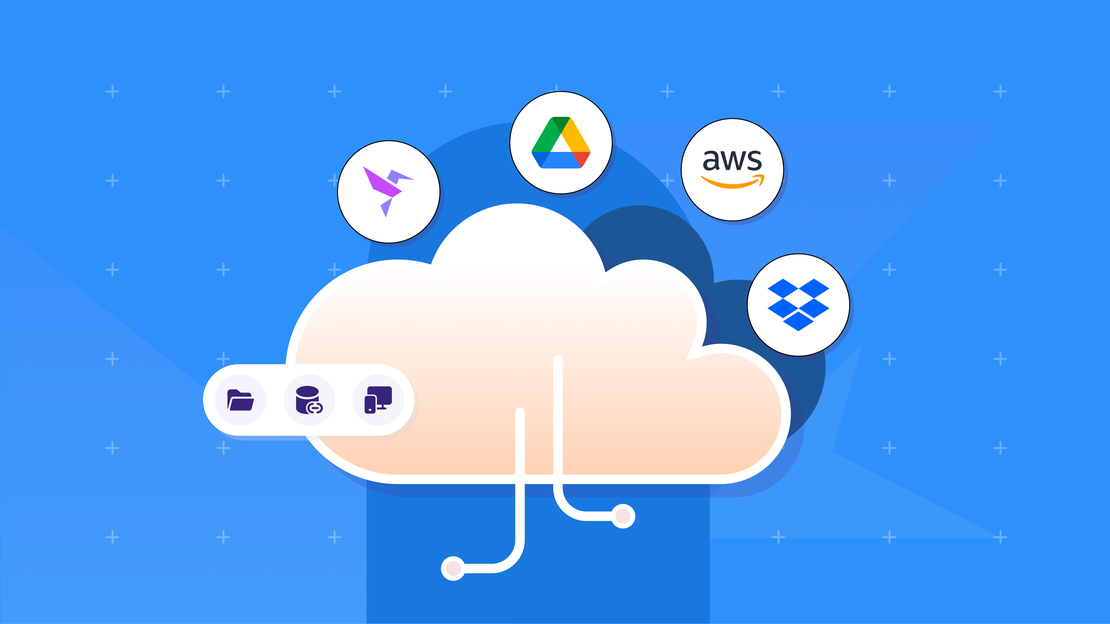Cloud Computing: What Is It in Simple Terms?
What is cloud computing in simple terms? It might sound like a mysterious, unreachable place—perhaps even ruled by the late Steve Jobs watching over our digital lives—but in reality, cloud computing is much more down-to-earth.
In this article, we’ll explain what cloud computing is in simple terms, how it works, and why it’s become essential for modern work and collaboration.

Table Of Contents
What is cloud computing in simple terms?
Cloud computing refers to the use of remote servers accessed via the internet to store, manage, and process data, instead of using a local computer or physical server. In even simpler terms, the cloud is an online environment where you can store your files and access software from anywhere.
This data can include everything from documents and presentations to music files, photos, videos, and contacts. All of it is securely stored on remote servers, ready for access whenever and wherever you need it.
Who manages those remote servers?
Great question. Major tech companies like Google, Microsoft, Amazon, and Apple operate massive data centers—huge buildings filled with servers that run 24/7. These data centers are located all over the world, including in the United States, Sweden, the Netherlands, Germany, and Ireland.
Examples of cloud software
Rather than installing software or saving files on your own computer, cloud computing allows you to use online apps and services through a web browser or mobile device.
- Popular examples include: Google Drive, Amazon Web Services (AWS), Dropbox, Microsoft 365, Slack, and our own FlowQi business software.
With cloud computing, there’s no need for local installations or bulky servers. You simply log in and start working, from anywhere with an internet connection.
Why are organizations embracing the cloud?
The shift to remote work during the COVID-19 pandemic significantly accelerated the use of cloud computing in the Netherlands—and around the world. As companies were forced to support remote teams, the cloud became not just useful but essential. That trend has only continued to grow.
For small businesses and scaling teams, cloud computing also offers a flexible and cost-effective solution. It removes the need for large upfront investments in hardware or ongoing IT maintenance, making it easier to collaborate and grow.
What business processes can you run in the cloud?
Actually, almost all business processes can now be run in the cloud. Some common examples include:
- customer relationship management (CRM)
- project planning and task management
- email marketing campaigns
- accounting and invoicing
- customer support and ticketing
- document management
- collaboration and internal chat
- inventory management and sales tracking
In other words, you can fully digitize your back office and run it in the cloud. On top of that, you can automate many workflows—like sending recurring invoices and reminders, launching email campaigns, assigning tasks, sending follow-ups, or rolling out automatic software updates.
Pros and cons of working in the cloud
Naturally, working in the cloud comes with both benefits and drawbacks. Whether the pros outweigh the cons depends on your needs—but in our experience, they do.
Pros of working in the cloud
- The obvious one: you can work from anywhere with an internet connection. You’re no longer tied to a single location.
- Real-time collaboration becomes easy—multiple team members can work on the same file or project simultaneously.
- Cloud-based software is always up to date, with the latest features and security patches automatically installed.
- You can scale your subscriptions or licenses based on your actual usage. No need to purchase expensive software suites that you barely use.
- It’s often more cost-effective. You usually pay per user and avoid major hardware or IT maintenance costs.
Cons of working in the cloud
- If you don’t have internet access, you may not be able to work. That said, outages are rare, and there are plenty of backup options—like mobile data, a portable router, or offline access to certain cloud tools.
- Free cloud services may come with limited security. To ensure your data is safe, opt for professional tools—like FlowQi—that prioritize secure infrastructure.
- You have limited control over software updates. Most updates happen automatically to improve performance and security. For some, that’s a downside; for others, it’s one less thing to worry about.
How to know if working in the cloud is right for you and your business?
Working in the cloud isn’t the perfect fit for every business just yet—but for most, it’s a game changer. Answer the questions below to see if cloud-based tools are a good match for your way of working.
Have you answered “yes” and want to give it a try? Sign up for our BETA Program and get full access to all our business software—for free.
- Do you work (partially) remotely or with a team spread across locations? If you or your team members don’t always work in the same place, cloud computing is essential. It lets you access your data anytime, anywhere—as long as you have an internet connection.
- Do you want to automate processes and save time? Modern cloud software, like FlowQi, allows you to automate repetitive tasks: from sending invoices and follow-up emails to managing tasks and scheduling updates.
- Do you rely on collaboration with others? Then yes, working in the cloud is a huge plus. Tools like our Project Management module support real-time collaboration, allowing teams to work efficiently together—even from different locations.
- Do you want to simplify your software and reduce maintenance? If you’re tired of manual backups and constant updates, the cloud offers a seamless alternative. Cloud-based tools update automatically and store your data securely—so you can focus on your work, not the tech behind it.